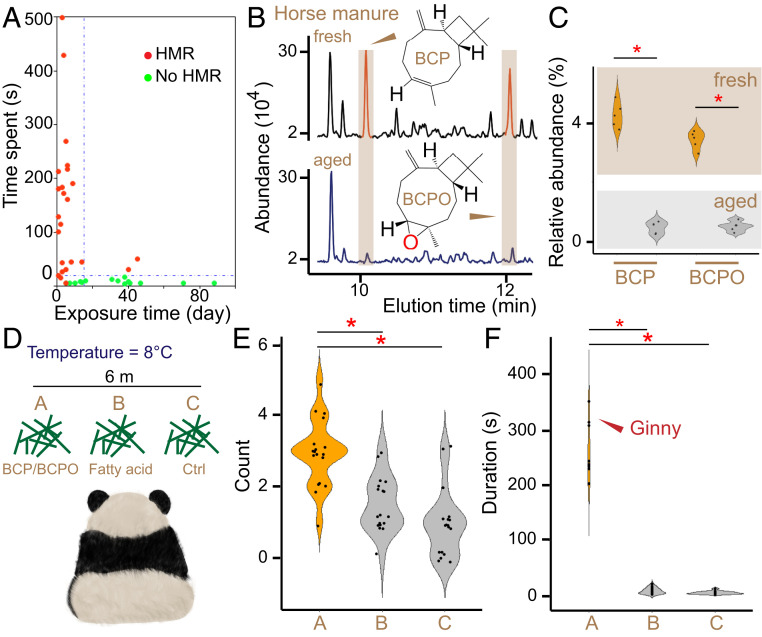Fig. 2.
BCP/BCPO evokes HMR behavior. (A) Relationship between HMR behavior and exposure time of horse manure. Durations of HMR behaviors were obtained from infrared camera-trap images. (B) Representative gas chromatography-mass spectrometer (GC-MS) analysis of the fresh (Upper) and aged (Lower) horse manure. Chemical structures of BCP and BCPO are indicated side-by-side with their peaks (shown in red and highlighted in yellow). (C) Relative abundance of BCP/BCPO in fresh (in yellow) and aged (in gray) horse manure. *P < 0.01. (D) A sketch indicating the experimental design method for animal behavior observation done in Beijing Zoo. Chemical compounds contained in different types of hay are shown. Control (Ctrl) represents pure water. (E) The number of panda visiting events in front of each hay. Group names are indicated as shown in D. Kruskal–Wallis rank sum test with post hoc Dunn test was used for pairwise comparison, *P < 0.001. (F) Time spent of panda visiting events in front of each hay. HMR behavior exhibited by Ginny is indicated by red arrow. Kruskal–Wallis rank sum test with post hoc Dunn test was used for pairwise comparison, *P < 0.001.

